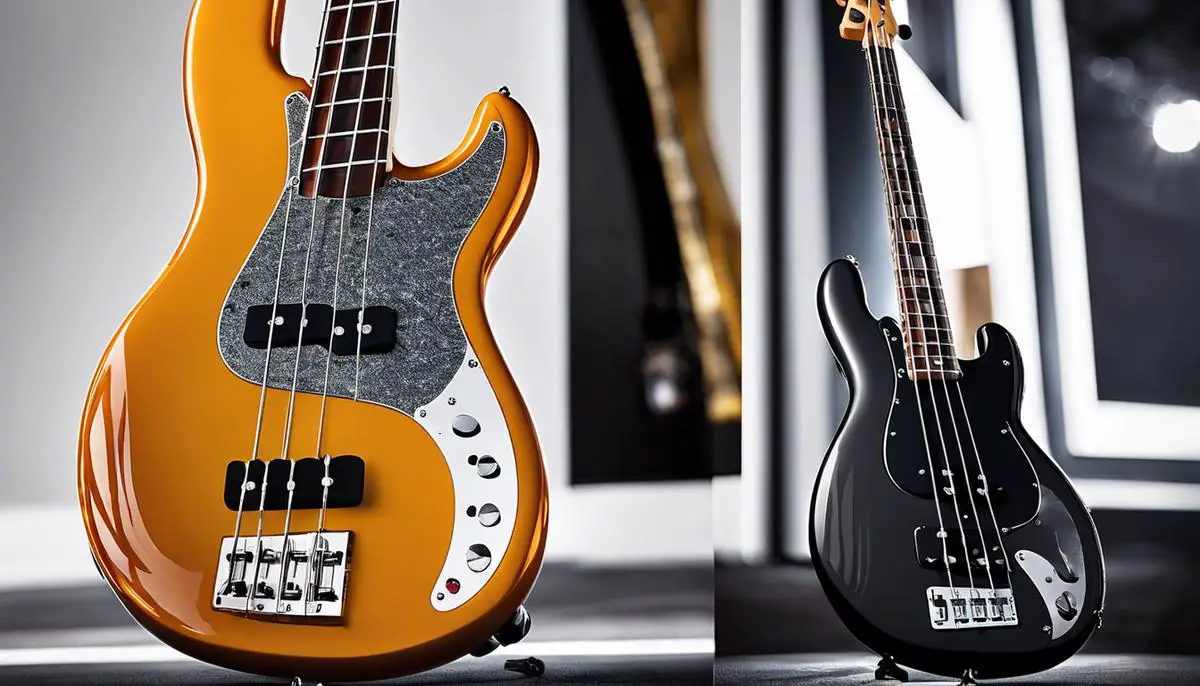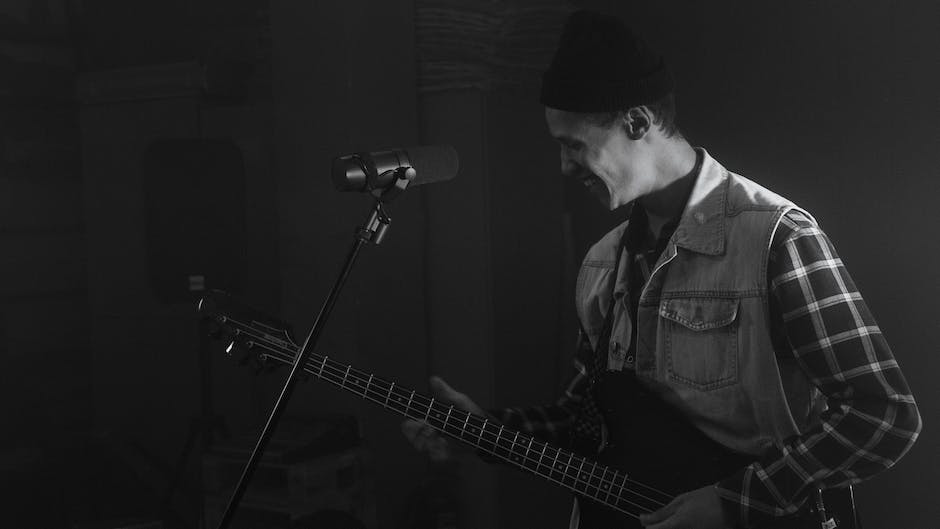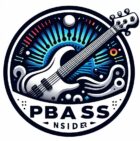PBass Playing Techniques. Welcome to the exciting world of Precision Bass (PBass) playing. This instrument is a rich blend of harmonious notes that creates a solid foundation for any music genre, given its versatility and remarkable features.
This guide familiarizes you with the PBass, providing a fundamental understanding of its components, the right way to hold it, and how to tune it effectively. We will then delve deeper into the intricate.
The fingerstyle technique is an essential tool for any aspiring PBass player. You leave the pick behind and use your fingers to produce that smooth, well-rounded sound.
Moreover, we’ll delve into the fretboard and scales to help amplify your understanding of the instrument and enhance your playability. No matter where you are on your musical journey, these instructions aim to be a confidence boost and a tool for growth.
Table of Contents
Understanding Bass Guitar Basics
Delving Into the Heartbeat of Music: Your Guide to Mastering the PBass Guitar
Embark on a journey through the melody-infused world of the PBass guitar, a cornerstone in the rich tapestry of music. This iconic instrument’s curated harmonies and propulsive rhythm are synonymous with the blueprint of countless music genres – from the riotous catharsis of rock ‘n’ roll to the soul-centered jazz vibes.
To grasp the innate language of the PBass and translate it into a soul-stirring symphony requires dedication, practice, and an understanding of fundamental concepts. Let’s embark on an exploratory adventure into the heart of PBass guitar playing.
1. Familiarize with the Standard Tuning:
Paint a major E chord. The PBass guitar’s standard tuning is E-A-D-G. This provides a spectrum of musical opportunities, offering the ability to play one octave from the open E string up to the E on the seventh fret of the A string.
Here is a table showing the notes on the 4 strings of a bass guitar over the first 5 frets:
| Open | Fret 1 | Fret 2 | Fret 3 | Fret 4 | Fret 5 |
| E | F | F# / Gb | G | G# / Ab | A |
| A | A# / Bb | B | C | C# / Db | D |
| D | D# / Eb | E | F | F# / Gb | G |
| G | G# / Ab | A | A# / Bb | B | C |
The notes are arranged in ascending order from left to right and from top to bottom. The first column represents the string names, and the first row represents the fret numbers.
2. Embrace the Importance of Fingering:
Delicate yet assertive, the placement and movement of fingers define the tonality of each played note. Alternate between your index and middle fingers while picking. Always remember, accuracy is king, and speed is secondary.
3. The Oasis of Rhythm:
Drums may set the beat, but the PBass is the driving force, bridging the gap between rhythm and melody. Understand the ‘groove’; lock in the rhythm with the drum. It’s a partnership, a dance that gives the music vigor and vivacity.
4. Explore the Scales:
Scales, the backbones of musical compositions, provide the groundwork for crafting captivating bass lines. Begin with major and minor scales. Know the order; play them backward and forwards. Eventually, experiment with blues and pentatonic scales for that extra pep.
5. The Anatomy of a Bass Line:
A great bass line serves the song, not the ego. Maintain simplicity. Focus on root notes of chords and leeway with the rhythm to create something truly memorable. You’ve struck gold if your bass line works harmoniously with the drums and supports the melody.
6. Techniques and Effects:
Different techniques and effects add that unique color, from slap bass to palm muting, legato to staccato, rendering your bass line multifaceted. Learn to use them wisely, adding a dash of surprise and intrigue.
7. Practice Makes Perfect:
Techniques, rhythms, and scales all find perfection through constant practice. Schedule regular practice sessions, and be consistent, patient, and devoted. Exploring different genres amplifies technical diversity, opening the wide doors of musical dynamism.
The PBass guitar, elevated from a simple four-stringed instrument, manifests as a symphony of stories waiting to be told, a tool capable of weaving magic into souls—every cleft and crow in its design screams of musical possibilities waiting to be unearthed.
Mastering fundamentals catapult one into a realm where music becomes language – a provocative, provocative one with the potential to foster unity. The PBass Guitar is not just an instrument; it’s an extension of a musical soul, a companion in the exhilarating journey of musical exploration.

PBass Fingerstyle Technique
The undulating bass line that breathes life into your favorite tunes quietly morphs into a formidable beast under your persistent fingertips. The versatility of the PBass offers an expansive repertoire for the musically inclined, yet unlocking its full potential requires an understanding of efficient fingerstyle techniques. The following guide accentuates the sonic splendor of the PBass, transcending the four-string plateau into the dynamic realm of aural artistry.
First, familiarize yourself with the Dancing Duets, a term coined for the collaboration between your thumb and fingers. Your thumb steadies the bass by resting lightly on the edge of the pickup or the lowest string, acting as the fulcrum for your fingers to strum with precise control. The fluidity of your digits around the string will assure a polished resonance.
Secondary to that is knowing your Strings’ sweet spots. While bass strings are less sensitive than a guitar, picking closer to the fretboard endows the notes with a deep, resonant touch, while moving towards the bridge produces a sharper tone. Variety is the spice of bass life, and shuffling between the sweet spots allows you to craft a diverse panorama of tonal colors.
On your journey, pay heed to Alternate Plucking. Cycling between your index and middle fingers ensures the efficiency of your bass-playing endeavors. As your fingers grapple with notes swiftly, you’ll discover a smooth rhythm and faster playing speed. This fluid dynamic results in a rich tapestry of sound woven together by the bassist and his PBass in a harmonious dance.
Once these techniques become second nature, venture into the land of Ghost Notes and Slaps, originating in the heart of funk and jazz; these expressions of percussive bass technique add sparkle to your plucking. A ghost note, in essence, is a rhythmic element played with the strings muted, producing a subtle, barely-there aura to your bass line. On the other hand, a slap is a bold stroke, resonating with energy and making your bass playing pop.

Learning Fretboard and Scales
If there’s a language that transcends all boundaries, it’s the universal dialect of music.
Whether you’re a jazz lover, an admirer of rock, or an enthusiast of folk, understanding the fretboard and scales can propel your PBass playing technique to a new realm of virtuosity.
The Fretboard and Its Intricacies
Often referred to as the PBass player’s “road map,” the fretboard is your key to the world of rich basslines.
Deeper than just a collection of frets and strings, it’s a dynamic topography of tonal potential.
The paramount knowledge of each stop along this landscape enables a player to paint vivid musical images on the canvas of silence.
Sweeping Scales: Your Expressway to Melody
Unleashing melodic creativity starts by understanding and mastering the underpinnings of harmony – scales.
These sequences of notes create a network of pathways that allow for inventive exploration of the fretboard.
Whether you’re spinning a silky smooth legato or a punchy driving groove, scales provide the blueprint to your PBass narrative.
Scales, Fretboard, and PBass Technique: The Unbreakable Trinity
It’s in the harmony of the fretboard’s understanding and scaling intricacies where one’s PBass playing technique truly evolves.
The skill of your fretting hand creating melodies with the scales learned, and the precise plucking or slapping of your other hand reveals the beauty of coalescence.
This trinity births basslines that tell tales and create moods, laying the musical foundation for any piece.
An Ode to the Ongoing Musical Journey
Unfolding the fretboard’s secrets and dancing within the scales’ boundaries is not just a practice; it’s a journey.
A continuous voyage of discovery, growth, and self-expression.
It’s a readjustment of boundaries, crossing new thresholds, and shedding old constraints.
Understand this, and you’re not merely a PBass player; you’re a music storyteller, a melody weaver, a rhythm sculptor.
The Versatility of PBass: A Canvas for Creative Expression
The PBass, with its deep, resonant echoes, is a multifaceted, dynamic tool for creative expression.
Navigating the fretboard with an understanding of scales widens the horizons for the PBass aficionado.
Walk basslines with a jazzy swing, groove in the pocket with rock, or create sweeping arpeggios in a dreamy neo-soul piece.
Your PBass, your expression.
So, let’s tap into the heart of music and understand how the fretboard and scales harmonize with the PBass playing technique.
This is more than merely replicating existing music; it’s all about invention, communication, and narration.
Music is the vocabulary of passion, an anthem of unity, a testament to the power of humanity, and the PBass is your voice – resonant, profound, and open to infinite possibilities.
With recognition and understanding of the interplay of scales and fretboard, you’ve unlocked the door into the immersive universe of PBass playing technique.
Now, all you must do is step in.

Indeed, understanding the basics, mastering the fingerstyle technique, and learning the fretboard and scales are critical milestones on your PBass playing journey. But remember, music is an art filled with continuous learning and passion.
As you familiarize yourself with the PBass, take your time to experiment, enjoy every strum and note, and appreciate the unique sound you create. Always remember that the magic of music lies in personal expression; your unique interpretation of the scales and rhythm makes it so special. Are you ready to dive in, start playing, and release your unique sound?


